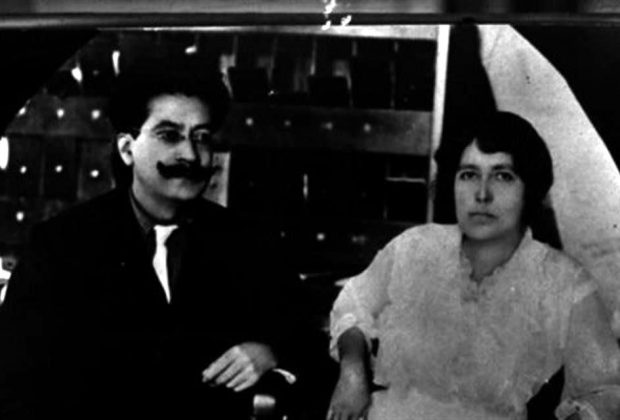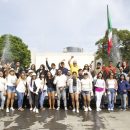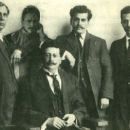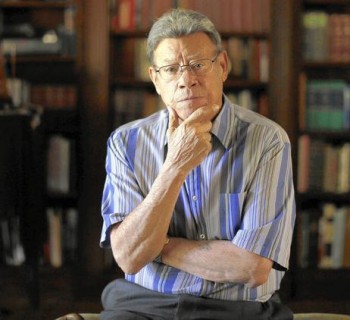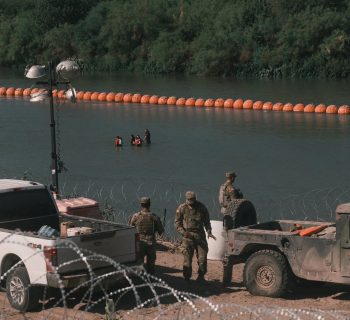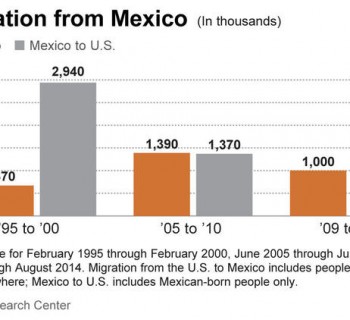By Erika P. Bucio | Reforma (para leer en Espanol) | NOV. 20, 2022 | Photo from Casasola Fund | Translation from Google
The plans for the 1908 rebellion of the Mexican Liberal Party (PLM) against the Porfirio Díaz regime were smuggled from the Los Angeles County Prison, on a mission carried out by three women: Ethel Duffy Turner, Elizabeth Trowbridge and María Brousse.
On a visit to the Mexican prisoners Ricardo Flores Magón, Librado Rivera and Antonio Villarreal, María dropped her open bag and when she crouched, she picked up the paper that Ricardo slid down the floor, while Ethel and Elizabeth hid the movements with their skirts to circumvent the guard's surveillance.
"We knew what we had done, since John (Kenneth Turner) had told us what that piece of paper contained. We had fulfilled our small, but indispensable cooperation to subtract surreptitiously (...) the plans for the 1908 revolution!
"We, two young women (Ethel and Elizabeth), who until then had led a life without difficulties, had gotten into a plot to overthrow the tyrant," Ethel Duffy Turner narrated in his work Ricardo Flores Magón and the Mexican Liberal Party, whose first edition dates from 1960.
"In the prison times of the leaders of the Board, it is the women who are going to take the baton of the editorial work of the newspaper 'Regeneración', although there are not their names, they are the ones who are going to carry these tasks."
Margarita Vasquez, Historian
A historical document that shows the author's intention to make women visible and "make her own voice and presence prevail in that story," of which she is part, proposes in an interview the historian Margarita Vasquez, who dedicated her doctoral thesis to the figure of Turner.
Women did an important job in the office of the Organizing Board of the Mexican Liberal Party in Los Angeles as well as espionage and propaganda activities, highlights the researcher of El Colegio Mexiquense in the prologue of the digital edition of Turner's book, published by INEHRM in 2022.
When Vasquez became interested in the work of Ethel Duffy Turner in Mexico, he knew little about her background beyond being a collaborator of Ricardo Flores Magón and wife of journalist John Kenneth Turner, author of the series of reports that would make up the book México bábaro.
Ethel Duffy Turner's book offers as a novelty "an overview of the actions of men and women who were part of the PLM, in a space little considered by the historiography of the time: the border between the United States and Mexico."
The political persecution by Díaz's regime provoked the exile of the Flores Magón in 1904 and in that context there were the arrests of the protagonists in the United States.
"There are investigations that have revealed precisely that in the times of prison of the leaders of the Board it is the women who are going to take the baton of the editorial work of the newspaper Regeneración, although there are not their names, they are the ones who are going to carry these tasks, which of origin were not intended for them," emphasizes the historian.
Ethel Duffy Turner was not only the English editor of the newspaper Regeneration at a critical moment, during the failed magonist revolt in Baja California in 1911, but together with Elizabeth Trowbridge and trade unionist John Murray created the magazine The Border (1908-1909), without abandoning his duties of activism and espionage.
In addition to being newspaper editors and propagandists against the Porfir regime, women linked to the PLM also financed the newspaper Regeneration or the Organizing Board as Elizabeth Trowbridge herself, linked to the Boston elite, who exhausted her fortune by financing the party and would end up marrying Manuel Sarabia, one of the leaders of the board.
Vasquez has focused on foreign women linked to the PLM, by reconstructing Turner's career in the book Ethel Duffy Turner (1885-1969). An existence to the limit, moved by the revolution, it was possible to make visible to others who had been left aside by a "nationalist narrative" that is not enough to "wrap the complexities and nuances that imply the revolutionary cross-border solidarity of the time."
Why isn't the work of women so present in the narrative of magonism? The historian attributes it to several reasons, one is the figure of Ricardo Flores Magón, who on Monday the 21st commemorates the centenary of his death, a "overwhelming, huge" figure as if it were talking about Emiliano Zapata or Francisco Villa, but also because there is an unfinished dispute over his memory.
It also involves gender inequality and a patriarchal structure of how the narrative has been built where women usually appear as an "annex" to the story.
The study of women in magonism or PLM is linked to the emergence of the approach to the history of women in Mexico in the late 1980s and with greater impetus in the 90s, with historians such as Gabriela Cano, Ana Lau Jaiven, Carmen Ramos, Mary Kay Vaughan, who began to do studies on the participation of women in the Mexican Revolution.
As has been relevant the work of American historians with Mexican roots who have reconstructed the links of working women with the PLM, in the structure of the working organization to which they were linked.
The first to be studied were those who signed the articles, when the newspapers began to be discovered, for example, Vésper of the "liberal propaganda" Juana Belén Gutiérrez de Mendoza or the work of the sisters Teresa and Andrea Villarreal, the latter director of the monthly magazine La mujer moderna who fought "for the freedoms of Mexico and for emancipation." Or the aforementioned foreigners Ethel Duffy Turner, or María Brousse and her daughter Lucia Norman.
Spied on by the Government
Because of their activism, the magonists also did not escape the surveillance of the espionage agencies hired by the Mexican government, the most important at the time, the American Pinkerton, at the service of the Porfirista regime.
"The surveillance by the Mexican Government was very well structured at that time, it was done through the Ministry of Foreign Affairs (SRE) which, together with the Interior, coordinated the espionage apparatus through the consulates in the most important cities on the border of the United States, and contracts were made with the agencies," explains historian Miguel Ramírez, an expert in Flores Magón.
The reports delivered by the agencies to the consulates were compiled by the Chancellery, only the "Revoltosos" file of the SRE concentrates more than 40 volumes, which have been sources of information for historians.
It consists, for example, of a file that recovers the fabrics used by women to secretly take notes from prisons and their valuable work of transcripcióning correspondence.
In fact, explains the historian Vasquez, Ethel Duffy Turner and Elizabeth Trowbridge left testimony of the experience of being spied on, and there were even attempts to destroy the printing press where they edited The Border magazine.
Although, he clarifies, the vigilance was different from that which weighed against male militants.
"I think so, gender differences weigh a lot when explaining how women are monitored and whether they are apprehended or not," he emphasizes.
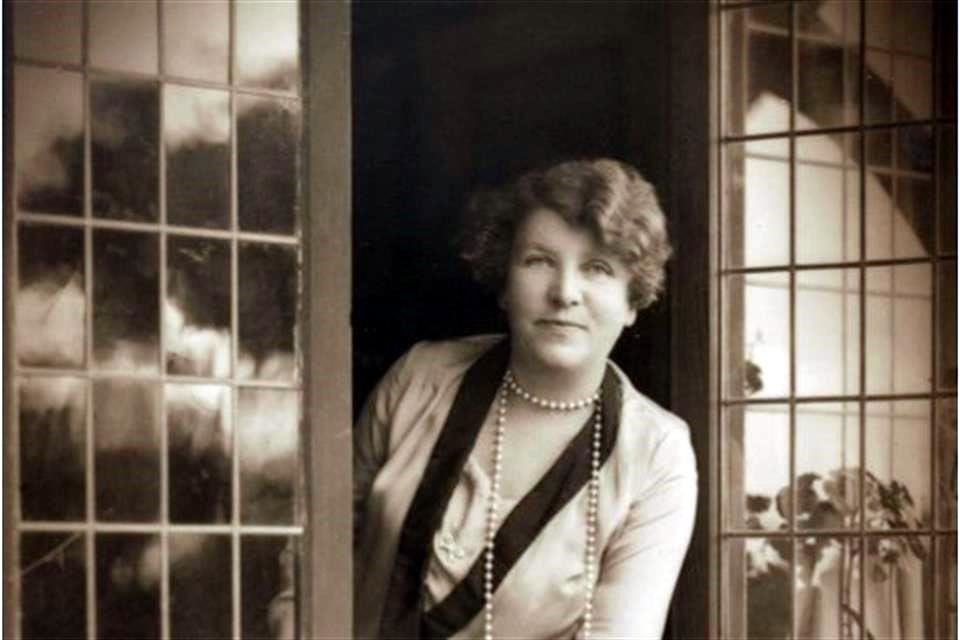
Those who took the weapons
Due to the absence of sources, less is known about those women who took up arms in the movement, such as Margarita Ortega, tortured and shot, who only knows what Ricardo Flores Magón said in Regeneration.
He describes the anarchist as a "skillful rider and expert in the handling of firearms," capable of crossing enemy lines and keeping the government soldiers at bay, who along with his daughter Rosaura joined the insurrection.
"He was not afraid to confess that he was a member of the PLM, and that, for the same reason, he fought against the three-headed hydrate: authority, capital, clergy; but he did not discover any of the comrades who agreed with her to launch the cry of Land and Freedom in the north of the state of Sonora," Flores Magón
Las Magonistas (1900-1932), where this review of Margarita Ortega comes from, is a compilation by the anarchist Rubén Trejo, the only existing so far, of the writings of the women who militarized in magonism during the first three decades of the 20th century.
The historian Jacinto Barrera Bassols, while compiling the work of Ricardo Flores Magón, has been able to identify women, grassroots militants of the PLM, whose trajectories he has reconstructed from Regeneration.
A slope in historiography
Although progress has been made in the study of the magonists, one of the many pending is to return to Regeneration to look for the names of women who financed the newspaper and others to whom attention has not been paid.
Little is known about those who survived after the Revolution and that is a pending in historiography.
Ethel Duffy Turner settled in Mexico in 1955 thanks to the networks of former members or supporters of the PLM and the invitation of President Lázaro Cárdenas to write the biography of Ricardo Flores Magón.
"What happened to María Brousse, Ricardo Flores Magón's partner, after he dies and she returns to Mexico? We have gaps, I think we need this type of information that we do have from the male part of revolutionaries," says historian Margarita Vasquez.
Vasquez will give the conference "Women in the PLM" this Tuesday at 5:00 p.m., which will be broadcast on the FB and Twitter of the INEHRM, within the course "The Revolutions of Ricardo Flores Magón".

